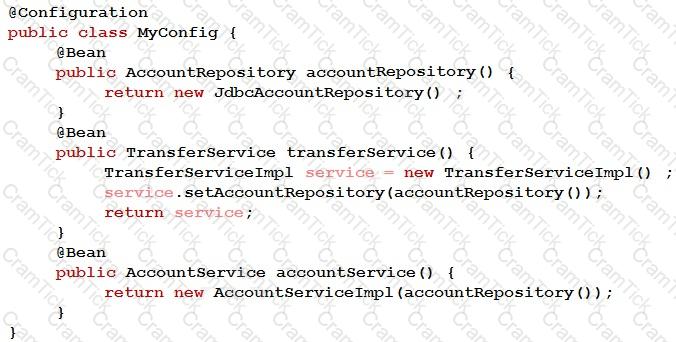Spring Boot will find and load property files in which of the following? (Choose the best answer.)
Which two statements are correct regarding the @EnableAutoConfiguration annotation? (Choose two.)
Which two statements are true regarding Spring and Spring Boot Testing? (Choose two.)
Which two statements are correct regarding Spring Boot auto-configuration? (Choose two.)
Which two statements are correct regarding the Health Indicator status? (Choose two.)
What two options are auto-configured Spring Boot Actuator HealthIndicators? (Choose two.)
Which three dependencies are provided by the spring-boot-starter-test? (Choose three.)
Which statement describes the propagation behavior of Propagation.REQUIRES_NEW annotation? (Choose the best answer.)
Refer to the exhibit.

Based on the default Spring behavior, choose the correct answer. (Choose the best answer.)
Which two annotations are meta-annotations on the @SpringBootApplication composed annotation? (Choose two.)
VCP-AM Develop 2022 | 2V0-72.22 Questions Answers | 2V0-72.22 Test Prep | Professional Develop VMware Spring Questions PDF | 2V0-72.22 Online Exam | 2V0-72.22 Practice Test | 2V0-72.22 PDF | 2V0-72.22 Test Questions | 2V0-72.22 Study Material | 2V0-72.22 Exam Preparation | 2V0-72.22 Valid Dumps | 2V0-72.22 Real Questions | VCP-AM Develop 2022 2V0-72.22 Exam Questions


